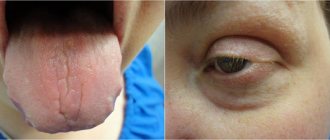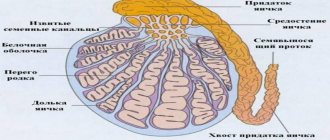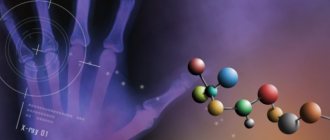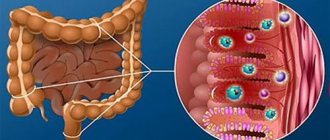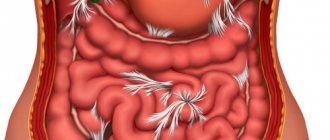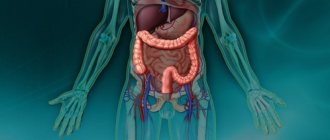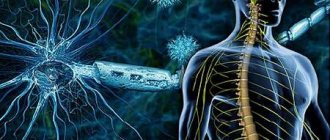What is flatulence
Flatulence has various mechanisms of origin, discussed in detail in the list below:
- Mechanical flatulence, which occurs when the excretory functions of the intestine are disrupted;
- Flatulence of psychogenic origin, which occurs during severe nervous disorders and stress;
- Alimentary flatulence, which most often occurs with excessive consumption of a certain number of products;
- Circulatory flatulence is observed when blood circulation in the intestines is impaired;
- Digestive flatulence is diagnosed when the normal digestion process is disrupted;
- High-altitude flatulence develops with low blood pressure;
- Dysbiotic flatulence occurs against the background of the favorable development of gas-forming bacteria in the intestine;
- Dynamic flatulence occurs when intestinal perilstatics are disrupted.
The norm of gas emitted for an adult is from 50 to 500 ml. With severe flatulence, the amount increases to 3000 ml.
What foods cause flatulence?
A common cause of abdominal enlargement is considered to be poor nutrition. If you regularly consume foods that lead to the fermentation process, you will not be able to eliminate the unpleasant symptoms. There are substances that are difficult for the intestines to process. They pass through the small intestine into the large intestine in an unprepared form.
Excessive gas formation is caused by:
- legumes;
- different types of cabbage;
- onion garlic;
- corn;
- dried berries and fruits;
- wheat;
- pasta;
- oat bran;
- peach, apple, pear and apricot;
- meat dishes from pork, lamb, goose;
- confectionery and flour products;
- milk.
These foods take a long time to digest.
A diet enriched with fructose or sorbitol will also lead to the development of flatulence.
Anatomical structure of the intestine and the mechanism of development of flatulence
The intestine is an essential organ of the digestive system, which consists of long and winding tubes with two segments (large and small intestine).
The small intestine looks like a winding tube with a length of 4 to 7 meters consisting of the following parts:
- Duodenum;
- Jejunum;
- Ileum.
The duodenum represents the initial section of the small intestine. The organ consists of 4 parts:
- Upper (about 5–6 cm);
- Descending (7–12 cm);
- Horizontal (6–8 cm);
- Ascending (4–5 cm).
The enzymes and bile necessary for the normal process of food digestion enter the duodenum from the gallbladder and pancreas.
The jejunum is a part of the small intestine that is about 1.5 meters long. At the same time, the organ is slightly longer in men.
The ileum is considered the lower section of the intestine, about 2 meters long, bordering the ileocecal valve, which separates the large and small intestine.
The small intestine consists of the following layers: mucous, submucosal, muscular and serous. Much of the digestive process occurs in the small intestine. The inner walls consist of folds with special intestinal villi that help break down the chyme coming from the stomach.
The large intestine has the following segments:
- The cecum is sac-shaped, 4 to 8 cm long;
- The colon consists of 4 sections (ascending, transverse, descending, segmoid) with a total length of 1.5 meters.
An important function in digestion is performed by the intestinal microflora, consisting of the following bacteria:
- Obligate flora (up to 98%) is represented by lactobacilli, bifidobacteria, peptococci, Escherichia coli, fusobacteria, bacteroides that perform protective functions necessary to ensure the normal digestion process;
- The facultative flora contains opportunistic bacteria (Pseudomonas aeruginosa, streptococci, staphylococci, Proteus). Excessive development of these microorganisms can lead to unpleasant symptoms (nausea, vomiting, flatulence).
The following organs also take part in the digestion process:
- Oral cavity;
- Pharynx;
- Esophagus;
- Stomach.
Processed food in the oral cavity through the pharynx and esophagus enters the stomach, where, under the influence of gastric enzymes and hydrochloric acid, it undergoes chemical treatment and is subsequently sent to the pylorus with a transition to the duodenum.
The valve closes automatically and prevents the return of food into the stomach. Next, the food bolus is broken down and excreted in the form of feces. Accessory organs involved in the digestion process:
- Salivary glands, which are located in the oral cavity and are involved in the process of salivation;
- The liver secretes bile and provides the necessary energy for the digestion process;
- The gallbladder is a reservoir of bile necessary for the breakdown of food;
- The pancreas produces pancreatic juice containing enzymes for digesting organic matter.
The norm for gas content in the body is 200 mg and has a certain composition: nitrogen, carbon dioxide, oxygen, hydrogen, hydrogen sulfide, methane, ammonia, mercaptan, skatole, indole.
Gas enters the body in two ways:
- An exogenous method in which gas enters the body when air is swallowed;
- Endogenous method, when gas formation is formed inside the body.
Causes of gas formation:
- Aerophagia (a phenomenon in which a person swallows excess gas while quickly eating food, smoking, chewing gum). A small part is released during belching, and the rest enters the general bloodstream, and subsequently into the small intestine and is excreted through the anus;
- The formation of gas directly in the intestines occurs when an acidic and alkaline environment interacts. Part of the volume is released through the vessels, and a larger amount through the small intestine and anus;
- Diffusion of gases in the bloodstream, which enters the general bloodstream and moves to the intestines under the influence of partial pressure.
The removal of excess gas is normally considered to occur during belching, exhalation and flatulence.
Bloating and gas formation causes and treatment in adults
An increase in abdominal volume occurs against the background of:
- irritable bowel syndrome;
- inflammation in the digestive canal;
- functional disorder of the gastrointestinal tract;
- food intolerance;
- presence of extra pounds;
- hormonal imbalance in women;
- parasitic infection;
- eating disorders: bulimia nervosa or anorexia;
- regular stressful situations, panic attacks, depression.
The use of certain medications in the form of:
- non-steroidal anti-inflammatory drugs;
- laxatives;
- antifungal medications.
The cause of flatulence may also indicate the development of a dangerous process in the body:
- accumulation of fluid in the abdominal cavity due to cancer, liver disease, kidney or heart failure;
- disruption of the pancreas;
- perforation of the intestinal canal.
Then the patient requires urgent medical attention.
Traditional treatment of intestinal dysbiosis
Causes of flatulence
Excessive accumulation of gases is due to the following reasons, discussed in the list below:
- Disruption of the natural process of gas formation;
- Change in gas absorption;
- Incorrect gas production.
The main reason for the formation of flatulence is considered to be the consumption of excessive amounts of foods that cause increased gas formation and the appearance of fermentation processes in the body.
List of diseases that can cause increased gas formation:
- Duodenitis;
- Gastritis;
- Pancreatitis;
- Cholecystitis;
- Colitis;
- Enteritis;
- Cirrhosis of the liver;
- Intestinal obstruction;
- Various intestinal infections;
- Atony, intestinal diverticulitis;
- Neurosis;
- Irritable bowel syndrome.
The causes and main symptoms of the diseases are discussed in detail in the table below.
| Name of the disease | Description | Main symptoms |
| Duodenitis | The occurrence of an inflammatory process in the digestive intestine, which leads to poor digestion, fermentation of food and increased gas formation | Pain in the sternum, heaviness in the abdomen, belching, heartburn, nausea, upset stool, flatulence, constipation. |
| Gastritis | This disease is characterized by a change in the level of acidity, which disrupts intestinal perilstatics and causes increased gas formation. | Pain in the stomach, constant nausea, vomiting, flatulence, constipation or diarrhea. |
| Pancreatitis | The disease in its chronic form causes irreversible changes in the tissues of the organ, which leads to improper production of enzymes and disruption of the digestive process with the formation of excess gases. | Severe pain in the epigastric region, belching, hiccups, vomiting, nausea, release of gases through the anus, diarrhea, constipation. |
| Cholecystitis | The disease occurs when bile flows improperly from the gallbladder. This pathology causes disturbances in the digestive process and contributes to increased gas formation. | Pain in the right hypochondrium, nausea, vomiting, fever, constipation, diarrhea, belching, bloating and heaviness in the abdomen, metallic taste in the mouth. |
| Colitis | An inflammatory process in the large intestine, which is accompanied by characteristic symptoms and disrupts the normal digestive process. | Constant aching pain in the lower and lateral abdomen, constipation, diarrhea, false urges during bowel movements, loss of appetite, nausea, vomiting, flatulence. |
| Enteritis | Dystrophic change in the mucous membrane of the small intestine, which leads to impaired absorption and digestion of food bolus. | Constant diarrhea up to 15 times per knock, severe pain in the middle part of the abdomen, weakness, nausea, vomiting, the appearance of a white coating on the tongue, bloating, release of gases through the anus. |
| Cirrhosis of the liver | When the liver is damaged, the process of bile secretion is disrupted, which leads to impaired digestion of fats. In this case, increased gas formation occurs when consuming high-calorie and fatty foods. | The presence of portal hypertension, varicose veins, itching of the skin, general weakness, enlarged liver, fever, nausea, vomiting, bitterness in the mouth, yellowness of the skin, flatulence, joint pain. |
| Intestinal obstruction | Increased gases are formed when intestinal motor function is impaired under mechanical influence (presence of a tumor, foreign body). | Cramping pain in the abdomen, constipation, retention of gases through the anus, bloating, nausea, vomiting. |
| Intestinal infections | The disease occurs when a pathogenic microorganism enters the stomach. With favorable development, the bacterium releases toxins, which disrupts the normal digestion process. | A sharp increase in temperature up to 3 degrees, weakness, dizziness, nausea, vomiting, pain in the stomach, flatulence, diarrhea. |
| Atony | As the disease develops, there is a significant decrease in the speed of movement of feces and hummus, which leads to the appearance of excess gases. | The appearance of regular constipation, weakness, loss of appetite, heaviness in the abdomen, flatulence. |
| Diverticulitis | The disease has a congenital and acquired nature with low intestinal pressure. As a result of such exposure, protrusion of the intestine and the appearance of characteristic symptoms are noted. | Abdominal pain, flatulence, constant rumbling, nausea, vomiting, constipation or diarrhea. |
| Neurosis | Increased excitability of the nervous system can cause disturbances in intestinal perilstatics and the appearance of excessive gas formation. | Anxiety, drowsiness, general weakness, sleep disturbance, increased irritability, loss of appetite, flatulence, nausea, vomiting. |
| Irritable bowel syndrome | The disease occurs when the sensitivity of receptors located on the intestinal wall changes. This condition disrupts the motility of the organ and causes increased gas formation. | Constant discomfort in the abdominal area, severe pain, a feeling of incomplete emptying during bowel movements, flatulence, nausea, vomiting. |
Doctors also identify manifestations of flatulence in newborn infants and elderly people, which can occur under the influence of such provoking factors:
- Incomplete functioning of the digestive system in a newborn baby;
- Age-related lengthening of the intestine;
- Reduced number of functional glands that participate in the process of enzyme secretion;
- Atrophy of the muscular layer of the intestinal wall.
Severe flatulence: how it manifests itself, how it happens and how it is diagnosed
Pathology may be aggravated by manifestations of the disease that caused it. If the disease occurs frequently, sharply, lasts a long time, and does not go away after using medications, you should consult a doctor.
Clinical picture
The clinical picture of the pathological condition is bloating, soreness, dyspeptic disorders. The disease may be accompanied by heart rhythm disturbances, sudden changes in mood, insomnia, and pain in the heart.
General symptoms of flatulence are divided into two stages:
- In the first case, there is severe flatulence and an enlarged abdomen. Gas does not pass due to spasm in the colon.
- In the second, gases are constantly released, intensively, which negatively affects the patient’s quality of life.
Classification
There are two forms of the pathological condition: acute, chronic. Acute may signal the development of peritonitis. Causes: obstruction, mechanical damage to the intestine. Chronic is caused by swallowing air and impaired salivation.
According to the mechanism of occurrence, flatulence occurs:
- Dynamic. Caused by impaired intestinal motility.
- Dysbiotic. The main reason is an increase in the number of bacteria that form gas.
- High-rise. The reason is staying in areas with low atmospheric pressure.
- Digestive. It is provoked by a violation of the digestive processes.
- Circulatory. Caused by circulatory disorders.
- Nutritional. The reason is the abuse of gas-forming products.
- Psychogenic. Provoked by nervous and mental disorders.
- Mechanical. Caused by mechanical disorders of excretory function.
People who suffer from severe flatulence should go to the hospital immediately. The doctor, after examination, will prescribe suitable treatment.
Symptoms
Neither an adult nor a child is immune from the occurrence of an unpleasant condition. The disease significantly reduces the quality of life and brings discomfort.
The disease may be accompanied by the following symptoms:
- bursting painful sensations;
- increase in body weight;
- increased gas removal;
- rumbling in the stomach;
- belching;
- bowel disorder: constipation or diarrhea;
- deterioration of general condition and well-being;
- malaise;
- headaches;
- lack of appetite;
- sudden change in mood;
- irritability.
Hiccups, heartburn, arrhythmia, heavy breathing, and shortness of breath may occur. When you are ill, your ability to work decreases.
Blackening of stool, the presence of bloody, mucous, purulent, bile secretions in them, together with an increase in temperature, as well as the appearance of acute pain, signals a serious disease of the gastrointestinal tract. In this case, you need to call a doctor.
Diagnostics
Without a thorough diagnosis, it is impossible to identify the cause of the disease. That is why, if alarming symptoms occur, you must rush to see a doctor.
In addition to the survey, examination, collection of anamnesis, patient complaints, the following is prescribed:
- general, biochemical tests of blood, urine, feces;
- X-ray examination;
- ultrasound diagnostics;
- endoscopic examination: colonoscopy, esophagoscopy, duodenoscopy, sigmoidoscopy.
If you suffer from severe flatulence, you should not endure it or treat it with unknown medications. Inappropriate treatment is fraught with unpredictable consequences.
Diagnosis of diseases that cause flatulence
Diagnosis of such diseases is based on the following sequential actions:
- Complete examination of the patient;
- Conducting laboratory research;
- Use of instrumental diagnostic methods.
A general examination begins with a detailed questioning of the patient about how long the manifestations of flatulence have been bothering him, what kind of lifestyle he leads and what he eats.
After the interview, the doctor palpates the abdomen and determines the presence of any characteristic symptoms. To identify excessive gas formation, when certain areas are pressed, a characteristic tympanic sound appears.
When conducting laboratory tests, the following tests are prescribed:
- General and biochemical blood test to identify the dynamics of changes in normalized indicators;
- Coprogram.
The inflammatory course of diseases of the digestive system is marked by the presence of pronounced leukocytosis, a decrease in the level of red blood cells, hemoglobin with the development of anemia. A biochemical blood test shows a decrease in albumin, since this indicator indicates the presence of pathology.
A coprogram (stool examination) allows you to determine the state of the intestinal microflora, the presence of an inflammatory process, assess the functionality of the digestive tract, and detect parasite eggs.
Instrumental diagnostic methods are discussed in detail in the table below.
| Name of diagnostic method | Description | To identify which diseases the technique is prescribed |
| Radiography | The essence of the technique is based on the fact that the necessary part of the body for research is directed under X-ray radiation, which has the ability to penetrate organs and tissues. The doctor can observe the resulting clinical picture on the monitor, and a special x-ray is taken for recording. To obtain a more accurate result, contrast agents are used, which are administered orally or through the anus before the actual procedure. This technique allows you to determine the functioning of the gastrointestinal tract, assess the condition of the mucous membranes, and identify the presence of pathological changes. | Abnormal development of organs, various neoplasms, duodenitis, gastritis, colitis, cholecystitis. |
| Ultrasonography | The technique is carried out using special ultrasonic waves penetrating through tissues and organs. When impulses penetrate the body, complete or partial reflection is noted, which makes it possible to examine the changes that have occurred in the digestive organs. The presented picture is clearly visible on the monitor, and if necessary can be transferred to a photograph. The use of this method makes it possible to determine various tumors, cysts, and disorders in the functioning of blood vessels. | Development of tumors in the digestive organs, inflammatory processes in the intestines, diverticula in the digestive tract. |
| Endoscopy | The technique allows for internal examination of organs using a special endoscope device consisting of a flexible tube and optical equipment with artificial light. The following techniques can be used during endoscopy: Esophagoscopy (examination of the esophagus), Gastroscopy (study of the stomach), Duodenoscopy (examination of the duodenum), Sigmoidoscopy (examination of the segmoid, rectum), Colonoscopy (examination of the large intestine). During an endoscopic examination, biological material (biopsy) is taken in parallel to study the composition of cellular structures. | Diseases of the stomach and duodenum, occurring in acute form, Severe nervous disorders, stress, Formation of tumors in the digestive tract, intestinal obstruction. |
Diagnostics
To understand why your stomach hurts and bloating appears, you need to undergo a medical examination. Flatulence is only a symptom of a certain pathology, so it is necessary to diagnose the underlying disease, which leads to bloating.
Upon examination, the gastroenterologist may note that the stomach is completely inflated (general flatulence) or that it is partially inflated, only in the right or left side (local flatulence). The entire abdomen swells if gases have accumulated in the small intestine, for example, with small intestinal obstruction, and only part of the abdomen swells if there is a large volume of gas in the large intestine, which happens with colonic blockage of the lumen.
When listening to the abdominal cavity, bowel sounds can increase before the narrowing of the lumen or weaken or disappear altogether. If upon palpation it is felt that the cecum is enlarged, then this indicates that there is an obstruction in the large intestine, and if, on the contrary, it has subsided, then this indicates small intestinal ileus.
During an X-ray examination, it is clear that a loop of intestine, most often the colon, is greatly swollen due to gas. To find out whether the digestion process is proceeding normally, a stool test is prescribed. An ultrasound examination of the abdominal cavity shows the condition of the mucous membrane, whether there is fluid in the abdomen or an atypical arrangement of organs.
The diagnostic criterion is the duration and frequency of pain. If gases accumulate after eating, regardless of food and their quantity, and continue for two hours, then this may indicate stomach disease (gastritis, ulcer, tumor).
With pathology of the duodenum, the stomach becomes very swollen two hours after eating. Heaviness and pain in the abdomen does not go away with exacerbation of pancreatitis. With lactase deficiency, swelling occurs only after dairy products.
If there is bloating in the upper abdomen, then this indicates a decrease in the motor or secretory function of the stomach, which leads to stagnation of food and the onset of fermentation and rotting. With these disorders, the patient is bothered by belching with an unpleasant odor, somewhat less frequently, reflux, and also has stomach pain due to inflammation of the mucous membrane.
The lower abdomen hurts and swells due to impaired intestinal motility, lack of enzymes, development of pathogenic microflora, and narrowing of the intestinal lumen.
To avoid bloating, you need to watch your diet.
Treatment method
The treatment method for flatulence depends on the cause that caused the characteristic symptoms. For any disease, doctors prescribe an individual treatment regimen.
Providing first aid for severe pain
A common consequence of flatulence in severe diseases is cramping pain in the form of intestinal colic. This condition can be dangerous for a person, so if characteristic symptoms appear, it is necessary to urgently call an ambulance.
Before the doctor arrives, it is necessary to ensure complete rest for the patient. It is recommended to take medicinal tea with soothing herbs to eliminate severe pain and relieve spasms (chamomile, lemon balm, mint).
An effective remedy is to take antispasmodic drugs (Spazmologon, No-shpa). The recommended dosage is 1–2 tablets. If you have severe bloating, you can take medications that relieve gases.
The main method of treating flatulence is divided into 3 stages:
- Symptomatic therapy;
- Etiotropic use of drugs;
- Pathogenetic therapy.
Carrying out symptomatic therapy
The prescription of medications is intended to eliminate severe pain. The most effective drugs are antispasmodics that help reduce smooth muscle and dilate blood vessels. The main drugs are presented in the table below.
| Name of medicine | Application, dosage |
| No-shpa | The dosage for adults is 40–80 mg three times daily. For children aged 6 to 12 years, the maximum amount of medication is 40 mg twice a day. |
| Papaverine | Adults take the drug in an amount of 40–60 mg 3–4 times a day. Dosage for children: 15-20 mg at the age of 14 years, 10-15 mg at 9 years, 10 mg at 6 years, 5-10 mg at 3-4 years, 5 mg at the age of 6 months to 3 years. |
Etiotropic treatment
Etiotropic treatment is necessary to eliminate the causes that caused the development of flatulence. The main categories of drugs are in the table below.
| Name of the drug | Application, dosage |
| Forlax | The initial dosage is 1–2 sachets per day. Subsequent use is adjusted according to the clinical manifestations of the disease. To prepare the solution, dissolve the contents of the sachet in a glass of warm water. |
| Duphalac | The initial dosage ranges from 15 to 40 mg. After further use, the amount of medication can be reduced to 25 mg. Children aged 7 to 14 years up to 15 mg, Children under 3 years 5 mg. |
With the development of tumor processes, surgical intervention is required after a thorough examination, so drug therapy is ineffective.
If a disorder of motor function is diagnosed, then the prescription of prokinetics (drugs that improve intestinal motility and perilstatics) is required, discussed in detail in the table below.
| Name of the drug | Application, dosage |
| Domperidone | Adults take the drug 10 mg three times a day before meals. Children weighing 20 to 30 kg take 5 mg twice a day. For weights over 30 kg, the dosage is 10 mg twice a day. |
| Cerucal | The dosage for adults and children is 10 mg per 1 kg of weight. The tablets must be taken 30 minutes before meals. |
To restore damaged intestinal microflora, probiotics containing beneficial bacteria for the body can be prescribed.
| Name of the drug | Application, dosage |
| Bifiform | The dosage for adults and children over 2 years of age is 1 capsule three times a day. |
| Linex | Adults take 3 capsules 3 times a day before meals. Children from 2 to 12 years old, 2 capsules 3 times a day. Infants. Children under 2 years old: 1 capsule three times throughout the day. |
Elimination of the infectious process in the intestines is possible by prescribing antibacterial drugs of various spectrums of action.
| Name of the drug | Application, dosage |
| Furazolidone | Adults take 2-3 tablets (100-150 mg) three times a day. The dosage for children is calculated in the amount of 10 mg per 1 kg of weight. |
| Rifaximin | The dosage for adults and children over 12 years of age is 600 mg every 3 hours. The antibiotic is best taken before meals for no more than 7 days. |
| Enterofuril | Adults, children over 7 years old: 200 mg suspension or 1 capsule 4 times a day. Children aged 2 to 7 years: 1 capsule 3 times a day. Antibiotics must be taken at regular intervals for no more than 7 days. |
Pathogenetic treatment
This therapy is aimed at directly eliminating the problem in the form of increased gas formation. The most effective drugs are presented in the table below.
| Drug category | Representatives | Mechanism of action | Application, dosage |
| Products of enzymatic origin | Mezim forte | These drugs contain enzymes that ensure the normal process of digestion and absorption of food. | Adults take 2 tablets 3 times a day. Dosages for children are prescribed individually. |
| The drug is intended for internal use in the amount of 1-2 capsules 3 times a day before meals. | |||
| Pancreatin | |||
| Carminative medications | Espumisan | The drug contains an active substance that eliminates increased gas formation. | Adults take 80 mg after meals. Children 6 to 14 years old 40–80 mg twice daily. Children under 6 years of age: 1 teaspoon of medication (about 40 mg) once daily. |
| Enterosorbent drugs | Enterosgel | Drugs of this action actively introduce toxins from the body, protect mucous membranes and support intestinal microflora. | Adults take 15 mg three times a day. Children over 5 years old: about 10 mg 3 times a day. Children aged 1 to 5 years 5–10 mg. |
| Phosphalugel | |||
| The dosage for adults is 1-2 sachets 2-3 times throughout the day. |
How to treat flatulence and bloating: drugs and tablets
The accumulation of air in the intestinal canal is a common phenomenon in adults. Therefore, it is recommended to keep medications in your medicine cabinet that relieve unpleasant symptoms.
You can relieve bloating with:
- enterosorbents;
- prokinetics;
- enzymes;
- antispasmodics;
- probiotics;
- defoamers or carminatives.
Enterosorbents remove toxic substances and pathogenic microbes from the intestines. They are considered safe and have a minimum of contraindications.
Popular drugs include:
- Activated carbon. An accessible and inexpensive drug. The dosage is calculated based on body weight: 1 tablet per 10 kg of weight.
- Polysorb. Available in the form of a white powder. A suspension is prepared from it. Has an antimicrobial effect. Unlike Activated Carbon, it removes only harmful bacteria from the body, while normalizing the intestinal microflora.
- Smecta. An inexpensive drug that comes in powder form. Normalizes the functioning of the intestinal canal, evacuates gases. It has several contraindications such as lactose deficiency, allergies to active and auxiliary components, and intestinal obstruction.
Prokinetics restore intestinal motility. Quickly cope with nausea, diarrhea and heaviness in the stomach.
This group of medications includes:
- Motilium.
- Itomed.
- Domperidone.
- Motilact.
- Trimethad.
It is better to take medications before eating.
Enzyme preparations are indicated when flatulence occurs as a result of enzyme deficiency.
In this case, patients are prescribed:
- Creon. Sold in capsule form. Contains pancreatin. Improves stomach function, restores the process of food digestion.
- Festal. Contains 3 active ingredients - pancreatin, bile and hemicellulose. Release form: pills. Reduces gas production.
- Mezim Forte. Inexpensive but effective remedy. Regulates the process of food absorption. Sold in tablets.
Antispasmodics reduce the tone and narrow the smooth muscles of the digestive system. Myotropic drugs will help with bloating and flatulence: Duspatalin, Papaverine, No-shpa.
Treatment with potato juice
Probiotics normalize the intestinal microflora, thereby stopping the activity of pathogenic microbes. Hilak Forte, Normobakt, Linex, Bifiform have a good effect.
Defoamers are most often prescribed for bloating. Carminatives damage the blisters and promote their rapid discharge.
For flatulence, patients can take:
- Espumisan.
- Dimethicone.
- Pepsan.
But drug therapy is aimed only at eliminating unpleasant symptoms. It is impossible to get rid of the cause that caused the pathological process.
Folk remedies for the treatment of flatulence
Folk remedies for the treatment of flatulence can be used when identifying the exact cause of the discomfort and conducting a preliminary consultation with your doctor.
| Folk remedies | Mechanism of action | Preparation and use |
| Chamomile tincture | The product has a beneficial effect on the digestive tract, relieves inflammation and reduces gas formation. Used to treat colitis, enterocolitis, severe flatulence. | Chamomile in the amount of 1 tbsp. Pour a glass of boiling water over a spoon and leave for 15 minutes. The finished product is taken 125 ml twice a day before meals. |
| Ginger tea | Tea helps improve blood circulation, which has a positive effect on the process of digesting food and prevents fermentation in the intestines. | To obtain greater effectiveness, you can add cinnamon and mint to ginger tea. All ingredients in an amount of 0.5 tsp. Mix the spoons together and add a glass of boiling water, then leave for 10 minutes and take as directed. |
| Cumin seed tincture | The seeds stabilize digestion, eliminate severe pain and antispasmodic syndrome, and fermentation in the intestines. | 1 tbsp. Pour a spoonful of seeds into 250 ml of boiling water and leave for 30 minutes. The daily dosage is 60–70 ml three times a day before meals. |
| Coriander seed tincture | This remedy has a beneficial effect on the digestive system. With regular use, muscle spasms are reduced, appetite is increased, and diarrhea and flatulence are treated. | 2 hours. Pour 500 ml of hot water over spoons of seeds and bring to a slow boil over heat. The finished product is taken 125 ml three times a day before meals. |
| Dill seed tincture | Regulates the functioning of the gastrointestinal tract, helps eliminate intestinal perilstatics while reducing intestinal perils and provides a choleretic effect. | 2 tbsp. Spoons of seeds are poured into 500 ml of hot water and brought to a boil. Cool the finished product and take 125 ml three times a day before meals. |
| Decoction of mint leaves | Mint has a pronounced analgesic, antispasmodic, anti-inflammatory effect. | 2 hours. Pour a glass of boiling water over spoons and leave for 30 minutes. Take the finished product instead of tea throughout the day. |
How and how to treat gas formation at home
Not knowing what to do if you have bloating, the cause of which is not intestinal pathology, pregnancy, or infection, you should turn to very effective remedies available in every home.
You can get rid of flatulence by preparing a paste of chopped ginger and lemon juice with a little salt. All products must be natural; substitutes for lemon juice and ginger will not provide the expected result. By taking a similar mixture daily before meals for a week, you can clear the intestines of accumulated gases, improve stomach function and significantly increase appetite.
A very effective and most affordable remedy that relieves gases in the intestines quickly and effectively is activated carbon. By taking just a few tablets, you can feel relief almost immediately. You should drink charcoal at the rate of 1 tablet per 10 kilograms of weight, that is, plus-size people whose weight reaches 100 kilograms will have to take at least 10 tablets.
The tablet must be swallowed whole, without chewing; it is permissible to dilute several tablets in a glass of water and drink the whole thing. But what to do if we are talking about a child? Before giving the tablet to your baby, you need to stock up on some sugar or jam; the medicine is bitter, dissolves in the mouth instantly, and the bitterness does not go away even after 1-2 glasses of water. Another feature of activated carbon is its ability to cause constipation. This fact, of course, is unpleasant, but constipation, in most cases, does not last long, after which the functioning of the intestines and stomach returns to normal.
For patients with gastritis and stomach ulcers, activated charcoal is contraindicated, therefore, if symptoms of bloating occur, they need to postpone home treatment until later and immediately consult a doctor.
The second most popular remedy for bloating after activated carbon is dill water. It is so safe that it is allowed to be given even to infants, for whom flatulence is considered a common occurrence. To obtain dill water, you need 1 tablespoon of dry dill and 0.3 ml of hot boiling water. After letting the water sit for about 2-3 hours, you can start using it. Dill water should be infused in a glass container or thermos.
Before use, the tincture must be strained and drunk for 3-5 days, ½ cup before meals.
A decoction of chamomile also helps with bloating, for the preparation of which you will need 1 tablespoon of chamomile flowers and 1 glass of boiling water. After filling the chamomile with water, you need to let it boil for 2-3 minutes, then remove from the heat and let it sit for 3-4 hours, then drink 2 tablespoons 4 times a day before meals.
Not being able to treat bloating with dill tincture or chamomile decoction, you can simply eat a few dill leaves before meals, supplementing them with fennel and bay leaves.
For gastritis, accompanied by severe bloating, it is allowed to add a few teaspoons of honey, taken in the same proportion, to ordinary green dill. A mixture of honey and dill should be consumed before the next meal in the amount of 1 tablespoon at a time.
Almost everyone who has once experienced severe bloating tries to protect their intestines from further stress and therefore refuses to consume all dairy products, which are most often the cause of bloating. Such actions are wrong, since one of the best products that can restore normal stomach function is kefir. Nutritionists recommend consuming kefir constantly, as it helps unload the stomach and prevents the accumulation of excess gases in the intestines.
List of the best drugs
To eliminate the symptoms of flatulence, the following categories of drugs can be used:
- Cerucal (elimination of increased gas formation);
- Linex (restoration of normal intestinal microflora);
- Rennie (elimination of heartburn symptoms);
- Motilium (an effective remedy for increased gas formation);
- Mezim forte (tablets to restore normal digestion);
- Activated carbon (adsorbent for removing toxins from the body);
- Espumisan (elimination of intestinal colic);
- Meteospasmil (an effective drug for eliminating spasms);
- Trimedat (an effective drug for flatulence).
Is flatulence associated with pancreatitis?
Pancreatitis is one of those diseases that causes flatulence and bloating in adults. In this case, the person is bothered by other symptoms such as nausea, pain on the left side of the abdomen, dizziness, weakness, and lack of appetite.
When the pancreas is inflamed, food is not sufficiently processed by digestive juices. Untreated particles reach bacteria, which further break them down. As a result of this process, gases are formed.
A large amount of air leads to stretching of the walls of the pancreas, which adversely affects the nerve receptors.
Daily routine and proper nutrition for flatulence
To prevent flatulence, it is important to engage in active physical activity, as it promotes normal intestinal motility. It is recommended to avoid severe nervous disorders and stress and maintain a normal lifestyle when establishing a daily schedule.
Basic principles of nutrition:
- Providing fractional meals up to 5–7 times a day every 3–4 hours;
- Chewing food slowly and thoroughly;
- Avoiding quick snacks on the go;
- Consuming frequent and small portions;
- Cooking food using safe cooking methods (steaming, baking, stewing);
- Eating food warm, as very hot or cold food can trigger the development of flatulence;
- Avoiding the use of incompatible products;
- Compliance with fasting days once a week;
- Prohibition on the abuse of bad habits (alcoholic drinks, cigarettes, chewing gum);
- Maximum fluid intake of at least 2 liters per day;
- Drinking medicinal infusions (mint, sage, chamomile tea);
- Exclusion of milk and fermented milk products if lactose intolerant;
- Consuming fiber-rich foods to prevent constipation;
- Consumption of pureed food.
The list of recommended and prohibited products is presented in the table below.
| Prohibited Products | Authorized Products |
| Fresh pastries, rye bread, cake, pastries | Diet bread, stale bread, crackers |
| Millet and pearl barley porridge | Assorted cereals |
| Fish, fatty meats (mackerel, catfish, pork, lamb, duck, goose) | Lean meats and fish (chicken, rabbit, veal, cod, flounder) |
| Cream, ice cream, full fat milk | Low-fat cottage cheese, yogurt, kefir, milk |
| Marinated, canned, smoked products | Homemade pate |
| Peas, lentils, beans, radishes, cabbage, onions, mushrooms, corn | Pumpkin, beets, carrots |
| Hard-boiled eggs | Omelette, soft-boiled eggs |
| Prunes, peaches, grapes, bananas, raisins, pears | Baked apples, pomegranate, apricots |
| Alcohol, carbonated drinks, strong tea, coffee, sugar substitute | Natural juices, still mineral water, dried fruit compotes, weak tea |
| Spicy seasonings, plenty of salt | Greens, caraway seeds, dill |
| Nuts, seeds | Pistachios |
Flatulence during pregnancy: causes and treatment
Women often encounter this problem during pregnancy. The cause of the pathological process is changes in hormonal levels. In most patients, signs of bloating appear 7-10 days after conception. This symptom is often the first sign of pregnancy.
In order for the fetus to develop normally and there is no tone, the body produces progesterone in large quantities. The main task of the hormone is to relax smooth muscles. This also adversely affects the functionality of the digestive tract.
A properly selected diet and medications will help reduce the formation of gases. During pregnancy you are allowed to take:
- enzymes: Creon, Festal;
- antispasmodics: No-shpa;
- carminatives: Espumisan;
- enterosorbents: Enterosgel, Polysorb.
The diet should contain a sufficient amount of liquid. Overeating and late-night snacking should be avoided. You need to eat small portions up to 5-6 times a day.
How to quickly get rid of flatulence
In order to quickly get rid of flatulence, you must use the following techniques:
- Drug therapy;
- Diet;
- Traditional medicine.
In severe cases of the disease, complex therapy will be required under the supervision of the attending physician.
Diagnostic features
To make a diagnosis, it is necessary to undergo x-rays and undergo appropriate tests. If the x-ray shows dilated parts of some areas of the intestine, and there is fluid inside, then it is most likely an obstruction. With ascites, the abdominal cavity is darkened, and blurry boundaries of the psoas muscle are observed.
Thanks to computed tomography and ultrasonography, more valuable information can be obtained. Based on the data obtained, ascites, oncology or other diseases are diagnosed, and the size of the liver and spleen is determined. To find the distension of the intestine, which is inherent in inflammatory colitis, x-rays are necessary. If a person has cancer or an abscess, then the diaphragm will be raised on the right and have jagged edges.
The occurrence of flatulence after eating
Flatulence after eating can occur for a number of specific reasons, which are discussed in the list below:
- Overeating, as there is an excess amount of food in the stomach, which disrupts the normal digestion process;
- Fast absorption of food;
- Excessive consumption of salty and spicy foods;
- Abuse of carbonated drinks;
- Consumption of foods that cause fermentation in the body;
- Insufficient amount of enzymes to digest food;
- The presence of chronic or systematic diseases of the gastrointestinal tract.
Treatment of flatulence is carried out according to the standard scheme. For minor symptoms, you can get by with taking pills, but severe symptoms require complex therapy.
Pain due to flatulence treatment
Before you begin treating flatulence, you need to find out what caused it. When gas is produced in excess, other signs may appear that indicate a serious illness is developing.
Since flatulence usually accompanies dysbacteriosis, peritonitis, helminthiasis, and neuroses, treatment should begin with an accurate diagnosis. During therapy, flatulence should be eliminated, its causes should be identified and eliminated, and the patient’s general condition should be normalized.
The course of therapy consists of several stages:
- Treatment of the underlying disease. Enzyme deficiency can be eliminated by taking a course of enzymes such as Mezim Forte, Creon or Panzinorm. And you can get rid of the signs of cholecystitis with the help of choleretic drugs, antibiotics and antispasmodics.
- Normalizing peristalsis. To restore intestinal motor function, you will need to resort to prokinetics, the most famous of which is Motilium.
- Normalization of intestinal microflora. You can restore normal intestinal biocenosis with the help of probiotics and prebiotics, such as Bifiform, Linex, Maxilac and Acepol.
- Removing gases accumulated in the intestines. Suitable enterosorbents for this purpose are Smecta, activated carbon, Polysorb, Filtrum, which help in removing gases and toxins from the body.
Currently reading: Symptoms and treatment of irritable bowel syndrome with flatulence
Flatulence during pregnancy
Flatulence during pregnancy may occur for the reasons listed below:
- Changes in hormonal levels;
- Various diseases of the gastrointestinal tract;
- Disturbance of normal intestinal microflora;
- Poor nutrition with a predominance of heavy and high-calorie foods in the diet;
- Compression of the intestines by the fetus.
Main symptoms:
- Painful sensations in the intestinal area;
- Heaviness, bloating;
- Stool disorder (constipation, diarrhea);
- The appearance of bad breath;
- Hiccups, belching.
Eliminating flatulence during pregnancy involves following simple recommendations:
- Diet, proper nutrition;
- Eating in small portions;
- The predominance of boiled, stewed, baked food;
- Exclusion of harmful products;
- Control over bowel regularity;
- Wearing loose clothing.
If treatment is required, it is prescribed by the attending physician after examining the pregnant woman.
Main symptoms
Bloating is a common symptom among adults. This process is characterized not only by the release of gases, but also by other symptoms in the form of:
- a bursting feeling in the stomach and an increase in its volume;
- heaviness, tingling;
- rumbling;
- nagging painful feeling in the stomach;
- difficulty breathing;
- belching;
- discharge of gases with a characteristic sound and smell;
- nausea and vomiting;
- diarrhea or constipation.
Flatulence also adversely affects the general condition of the body. This process is accompanied by weakness, dizziness, the appearance of a rash on the skin, and insomnia.
Development of flatulence in children
Flatulence in children manifests itself when symptoms of the following nature occur:
- Abdominal pain, bloating;
- Increased irritability, tearfulness in infants;
- Tension of the abdominal muscles during palpation;
- Disturbance of normal sleep and appetite.
If the symptoms described above are detected, it is necessary to monitor the child’s diet and exclude provoking foods. If a more suspicious clinical picture is observed, then a visit to a doctor is required.
What to do if you have stomach discomfort and bloating
If a person is worried about discomfort in the stomach and an increase in abdominal volume, the first thing you need to think about is your diet. Flatulence often occurs after eating. Then foods that contribute to the formation of gases are excluded from the menu.
If bloating is accompanied by nausea, a painful feeling in the stomach, constipation or diarrhea, then you should visit a doctor. Based on the patient's complaints, he will make a diagnosis and prescribe medications.
How to identify symptoms of flatulence in a newborn baby
Newborn babies often develop flatulence, since the digestive system is imperfect and its functioning is being established. The following symptoms indicate discomfort:
- Restlessness, tearfulness and severe irritability of breast milk;
- Pulling the legs towards the stomach;
- Lack of normal sleep patterns;
- Refusal of food.
Causes of flatulence in infants:
- Dysbacteriosis of physiological origin (establishment of natural microflora);
- Poor nutrition (consumption of unhealthy foods by a nursing mother);
- Disruption of the normal process of breastfeeding. As a result, the child swallows excess air, which leads to increased gas formation.
To eliminate discomfort, it is important to follow some recommendations:
- Minimum consumption by the mother of foods that provoke increased gas formation (legumes, cabbage, radish, radishes, millet);
- Placing the baby on the tummy before direct feeding;
- Massage the tummy using circular movements in a clockwise direction;
- After feeding, the baby should be in an upright position in order to burp excess milk;
- Ensuring proper breastfeeding.
Possible reasons
The causes of gas formation in the intestines can be different and depend on both external and internal factors.
- Disturbances in the functioning of the enzyme system. Gas in the stomach and intestines can form due to a lack of digestive enzymes. In this case, pieces of undigested food enter unchanged into the intestinal lumen, which leads to the development of putrefactive and fermentation processes.
- Dysbacteriosis. With a physiological ratio of “bad” and “good” microflora, the main part of the gases produced is absorbed by bacteria. This does not happen with the development of dysbiosis. Gases in the intestines are formed in large volumes, which leads to bloating.
- Postoperative period. Gases in the intestines and increased flatulence (their release) accompany the early recovery period after surgery on the abdominal organs. Bloating is caused by decreased intestinal motility. The cause of the accumulation of gases in the stomach is stagnation of the food coma.
- Pathologies of the digestive system.
- Diet. The formation of gastric and intestinal gases can be provoked by certain food groups, in particular legumes and cabbage.
- Stress. Intestinal flatulence can form due to nervousness.
- Flatulence in older people. Quite often, uncontrolled flatulence develops in patients of the older age group. The cause is atrophy of the muscles of the intestinal tract.
- The period of bearing a child. Signs of flatulence appear in the middle and late stages of pregnancy, which is explained by compression of the enlarged intestinal uterus.
Important! Painful intestinal colic is common to all babies in the first year of life. To prevent their development, especially in breastfed infants, a woman needs to carefully control her diet.
Prevention
Prevention of flatulence involves performing certain actions:
- Following a diet and eliminating foods that can cause increased gas formation;
- Avoiding dairy products if you are lactose intolerant;
- Prohibit chewing gum, sucking candy, and drinking carbonated drinks;
- Regular breathing exercises;
- Ensuring physical activity every hour during sedentary work;
- Timely visit to a gastroenterologist and treatment of gastrointestinal diseases.
Why does flatulence occur and the stomach swell?
There can be many reasons why flatulence and bloating occur. In any case, bloating is a symptom indicating that something is wrong with the human digestive system. However, it is impossible to determine a specific disease based on this symptom alone. After all, increased gas formation is observed in 90% of gastrointestinal diseases.
Also, increased gas formation and bloating can be a consequence of a person’s unhealthy lifestyle and diet. First of all, it is worth mentioning the main causes of increased aerophagia:
- talking while eating
- smoking,
- use of low-quality dentures,
- chewing gum,
- food on the go.
Also, a significant amount of gases can enter the stomach as a result of drinking carbonated water, kvass, beer, which can also lead to bloating of the abdominal cavity.
Sometimes increased gas formation and bloating may be transient. For example, if a person sleeps at night in one position, then gases can accumulate in one of the intestinal sections, and the next morning there will be symptoms of flatulence. However, morning flatulence is a transient phenomenon.
The main causes of flatulence include poor nutrition and an irrational diet. Some types of food can cause increased fermentation in the intestines and stomach, which causes increased gas formation and bloating. Everyone knows that plants of the legume family, especially peas, have a similar property.
It is worth mentioning separately about another cause of flatulence - lactose or milk sugar intolerance syndrome. This is the name of a disease in which a person’s gastrointestinal tract does not produce the lactase enzyme, which breaks down milk sugar - lactose. Excess milk sugar in the gastrointestinal tract can also lead to a phenomenon such as bloating.
In addition, other sugars - fructose, sucrose, raffinose (sugar found in legumes) and starches, as well as sorbitol (sugar alcohol) - are poorly digested in the gastrointestinal tract. And if some of the sugar remains in the intestines, then it becomes a favorable environment for the proliferation of bacteria that produce gases. Thus, sweet foods can also cause flatulence.
Another syndrome that can cause increased gas formation and bloating is celiac disease. This is the name of a condition in which a person’s gastrointestinal tract is unable to digest gluten, a protein found in many cereals.
In addition, eating heavy, overly spicy and fatty foods does not contribute to digestion.
Other diseases that may cause increased gas formation and bloating:
- enteritis,
- gastritis,
- colitis,
- hepatitis,
- cirrhosis,
- cholecystitis,
- thrombosis of the intestinal walls,
- helminthic infestations,
- biliary dyskinesia,
- pancreatitis,
- adhesions in the intestines,
- intestinal obstruction,
- Crohn's disease,
- tumors
- intestinal stenosis.
As you can see, there are quite a few reasons that can cause bloating. If increased gas formation is caused by any functional intestinal disease, then, as a rule, it does not go away even if the diet is adjusted.
Irritable bowel syndrome is another possible cause of bloating and flatulence. This is a very common disease, affecting 20% of people, most of whom are women. Its occurrence is influenced by increased levels of stress, depression and neuroses.
Dysbacteriosis
Dysbacteriosis is also among the possible causes of flatulence. Dysbiosis is not considered to be a separate disease; rather, it is a syndrome that occurs as a result of other gastrointestinal diseases or as a result of the use of antibiotics. It is expressed in a decrease in the number of lacto- and bifidobacteria in the large intestine and an increase in the amount of gas-producing pathogenic microflora.
Reviews
Dear readers, your opinion is very important to us - therefore we will be glad to hear your feedback about flatulence in the comments, it will also be useful to other users of the site.
Sergey, Sevastopol
I always experience increased gas formation when I overeat, so I try to eat right and not eat unhealthy foods. If you follow a diet, then no problems arise.
Elena, Moscow
I remember that the child had severe colic after birth. They were saved only by massages and dill water. We didn’t sleep until 3 months, so flatulence in newborns is a real phenomenon and requires patience.
What foods can be included in the diet
The menu should consist of foods that are healthy for the stomach and intestines. Therefore, it is recommended to include in the diet:
- plain yoghurts;
- ginger, fennel;
- spinach;
- cucumber juice.
To improve intestinal motor function, the menu should include porridge: buckwheat, oatmeal, rice.
Features of pathology treatment
How to relieve bloating? The first thing you need to do when you have bloating is to determine the cause that provoked this condition. Taking into account the type of pathogen, you can choose the right therapeutic course.
Drug therapy plays an important role in flatulence.
The purpose of treatment: to eliminate the main ailment that provoked increased gas formation and bloating, to evacuate excess gases, and also to restore healthy gastrointestinal microflora. Anti-flatulence tablets are selected based on the cause of excessive gas formation. Don’t forget that diet also plays an important role in bloating.
Drug treatment
When treating bloating, effective medications are prescribed such as:
- Rennie;
- Bobotik;
- Festal, Mezim, Creon and Pancreatin;
- Motilium;
- Smecta;
- Activated carbon;
- Espumisan;
- Enterosgel, Linex;
- Cerucal;
- Pepsan-R and others.
How to get rid of bloating during pregnancy? During this period, it is difficult to choose medications, since many of them are contraindicated for pregnant women. As a rule, herbal preparations are prescribed. One of these medications is Iberogast, which has a complex effect. With its help, you can improve the activity of the gastrointestinal tract and reduce the symptoms of flatulence.
Traditional treatment
It helps with bloating and traditional medicine uses herbal infusions and teas for this, such as:
- herbal infusion;
- Dill water;
- caraway;
- potato;
- mint;
- pharmaceutical chamomile;
- sagebrush;
- charcoal.
Prevention of flatulence
Flatulence in most cases is harmless and is caused by poor diet. Therefore you should note the following:
- Avoid foods that cause gas: Bloating is usually caused by explosive foods. If the causative agents of flatulence are known, victims can easily correct them by avoiding these foods. For example, bean lovers should soak the beans for 12 hours and cook for a long time. This reduces gas-forming properties. Also be careful with onions, cabbage, unripe fruits, fresh bread and coarse (heavy) whole grain breads, and carbonated drinks.
- Light foods : Eat mostly foods that are easy to digest. High fat, heavy and heavy meals are extremely difficult on the digestive tract and can easily lead to flatulence.
- Healthy Spices : When cooking, use digestive spices such as cumin, anise, marjoram or coriander as often as possible to prevent bloating and indigestion.
- Enjoy your food instead of rushing : take time to eat, chew your food thoroughly and don't talk while eating. In this case, not much air will enter the intestines. By the way, several small meals throughout the day are better than two large ones.
- Stomach in motion : exercise and sports move the intestines. If you don't like exercise, at least try a short digestive walk after eating. Even home remedies such as heating pads, abdominal massage, and medicinal teas such as cumin or chamomile tea can be helpful.
Important Research
These studies help to find out the reasons for complaints:
- disease history
- colonoscopy
- H2 breath test
- coprogram
- U-studies
brief information
- Why does flatulence occur? Too much air accumulates in the stomach - the stomach stretches. Often there is a more intense physiological release of gases through the anus (flatulence).
- Causes: High fiber foods or bulky foods (cabbage, legumes, onions, etc.), Carbonated drinks, alcohol, coffee, swallowing air while eating or talking, stress, bowel irritation, food intolerance (such as lactose intolerance , celiac disease), food allergies, disturbance of intestinal flora (for example, as a result of treatment with antibiotics), disturbance of pancreatic function (pancreatic insufficiency), intestinal obstruction, intestinal cancer, cirrhosis of the liver; in children: three-month colic
- Treatment: antifoams, digestive and antispasmodic agents, home remedies; if necessary, treatment of the underlying disease
- Home remedies: heating pad, warm wrap, mashed potatoes, circular abdominal massage, anise, dill and cumin tea
- Prevention: Avoid foods and drinks that are difficult to digest and produce gases (for example, fatty foods, cabbage, beans, carbonated drinks), use digestive spices (cumin, anise, marjoram, etc.), Eat slowly and chew food thoroughly, Increase the number of smaller meals you eat per day, get enough exercise and sports (eg, digestive walking, swimming, cycling)



